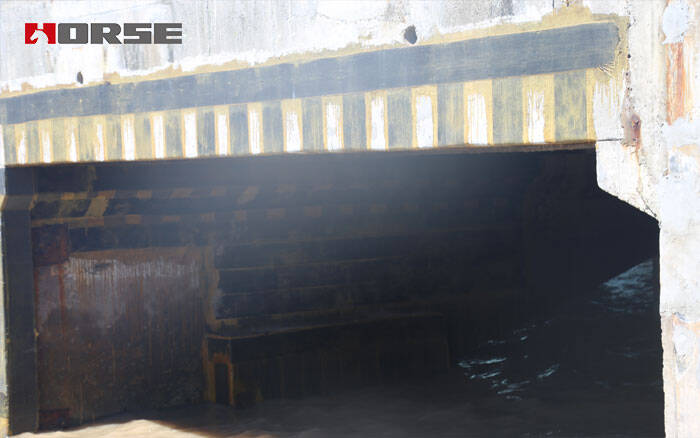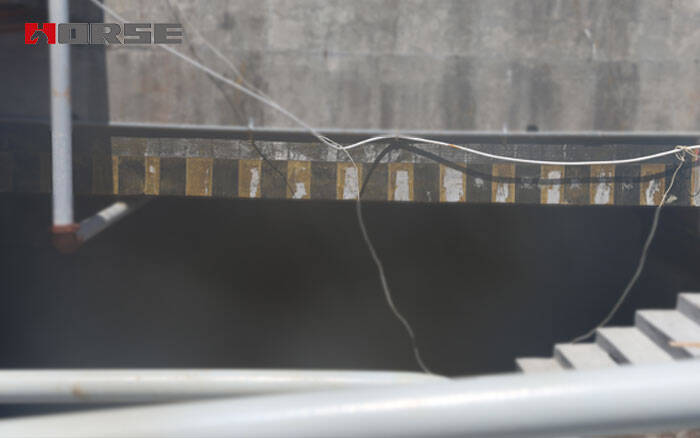Bridge strengthening
Carbon fiber reinforced polymer(CFRP) wrap for bridge retrofit
After CFRP wrap retrofitting the bridge, the flexural capacity of the strengthened section increases by 14.3%. The construction effect of this project is good, there is no quality problem, the practice has proved that the advantages of carbon fiber reinforced structure technology is obvious, the application prospect is bright.

Carbon fiber reinforced polymer (CFRP wrap) reinforcement and repair technology is a new type of structural reinforcement technology. It refers to the use of high-performance resin adhesives to paste carbon fiber cloth on the surface of building structural components, so that both work together to improve the bearing capacity of structural components (bending, shear) so as to achieve the purpose of strengthening and reinforcing the building.
1 the most obvious advantages of CFRP wrap reinforcement technology are the following:
(1) High strength, high efficiency, wide applicability and easy quality assurance. At present, the tensile strength of carbon fiber materials is more than ten times higher than that of ordinary steel.
(2) Construction is convenient, work efficiency is high, no wet operation, no on-site fixtures are needed, and construction occupies less land.
(3) Carbon fiber materials have good corrosion resistance and durability. After strengthening and repairing, the weight of the original structure and the size of the original components are not increased, nor need to be maintained. The external decoration is not affected.

2 Construction Technology
2.1 reinforcement principle
The principle of CFRP reinforcement is to make use of the high corrosion resistance of CFRP to paste CFRP onto the surface of bridge concrete members with special adhesive resin or impregnated resin. After curing, CFRP forms a new stress complex and works together with the original component, thus playing a strengthening role. (Continuous carbon fibers of high strength or high modulus of elasticity, arranged in bundles in one direction, impregnated with epoxy resin or cured without resin)
2.2 construction procedure
Component surface treatment - brushing base resin - brushing leveling glue to leveling, pasting carbon fiber cloth and bonding glue to fully infiltrate carbon fiber cloth - reinforcement layer of the outer protective layer treatment. Take concrete beam reinforcement as an example:
1) surface treatment of concrete beams. Clean the surface of the beam until the fresh concrete structure layer is exposed, and repair the depression with polymer mortar.
2) applying primer, level and carbon fiber adhesive. The purpose is to strengthen the bonding force between CFRP and concrete surface.
3) bonded carbon fiber wrap. Use the roller brush to evenly spread the impregnating resin on the surface of the surface of the beam and paste the carbon fiber cloth.
4) surface protection. A layer of base resin is coated on the surface of carbon fiber cloth. After the base resin is dried, cement mortar is applied to protect the surface layer. The thickness of the surface layer is not less than 20 mm.
2.3 points for attention in construction
1) Carbon fiber sheet bending along the direction of its fiber will lead to stress concentration and fiber breakage, affecting its strength play. Carbon fiber sheet corner sticking, the corner should be chamfered and polished into an arc, the arc radius should not be less than 20 mm. Carbon fiber reinforcement method is described. And enhance the application force of reinforcement engineering.
2) The overlap length of CFRP should not be less than 100 mm along the stress direction of CFRP, and the longitudinal CFRP should extend to the edge of the support and be anchored with CFRP U-shaped hoop to reduce the stress concentration of CFRP.
3) The adhesive layer should not be too thin, its average thickness should not be less than 2 mm; the air bubble between CFRP and concrete surface should be fully extruded.
4) The actual adhesive size of CFRP should not be less than the design amount, and its position deviation should not be greater than 2 cm under normal circumstances; the total effective adhesive area should not be less than 95%.
5) fiber cloth is conductive material, and carbon fiber sheet should be kept away from electrical equipment and power supply during construction.
3 project
3.1 project overview
The river Pu bridge was opened to traffic in December 1989 and has been in operation for nearly 20 years. The bridge is designed to be a 12 * 20m prefabricated prestressed concrete T beam, each span consisting of 5 T beams, with a total length of 244.64m. The main parameters are: T beam height h = 1300mm, width b = 180mm, a = 15mm, As = 5080mm2, FY = 300N / mm2, FC = 11.9N / mm2, FTK = 1.78N / mm2. Through on-site inspection and theoretical calculation, the bridge has not met the requirements and needs reinforcement. After expert's argumentation, the concrete reinforcement parameters are as follows: NCF = 2, TCF = 0.111mm, Ecf = 250GPa, fcfk = 2000 MPa, WCF = 180 mm, SCF = 100 mm, HCF = 300 mm. The reinforcement mode is U-shaped sticking, the coefficient of CFRP shear reinforcement form is 0.85, and the load form is uniform load.
3.2 Comparisons of calculation results of normal section bearing capacity before and after reinforcement are shown in Table 1. Comparisons of frequencies before and after reinforcement are shown in Figure 1.
Comparison of normal section bearing capacity before and after reinforcement
Bearing capacity before reinforcement | Bearing capacity after reinforcement | Increase |
| Mu=1524kN·m | Mu=1741.5kN·m | 14.3% |
4 Conclusion
As shown in Table 1, the flexural capacity of the strengthened section increases by 14.3%. The construction effect of this project is good, there is no quality problem, the practice has proved that the advantages of carbon fiber reinforced structure technology is obvious, the application prospect is bright.